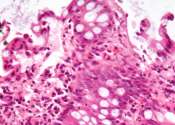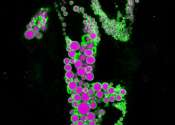A common type of fiber may trigger bowel inflammation
Inulin, a type of fiber found in certain plant-based foods and fiber supplements, causes inflammation in the gut and exacerbates inflammatory bowel disease in a preclinical model, according to a new study by Weill Cornell ...
May 3, 2024
1
156









